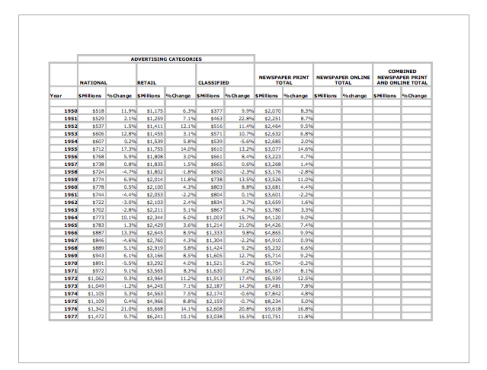In 2009, newspapers made $27.564 billion in total advertising revenue. As a whole, they generated $24.821 in print revenue, while the rest ($2.743 billion) came from online advertising.
Those numbers are indeed big, but when you put them in context, they are simply bad. In 2008, newspapers made $37.848 billion. Yes, they made a full $10 billion more last year than they did this year, a staggering drop of 27.2%. Nearly all of that loss was from print: Newspapers made $34.74 billion in print advertising in 2008, while they only accumulated $24.821 billion in 2009.
The story’s even worse when you go farther back into newspaper advertising history. Let me outline just how far newspapers have fallen:
- In 2000, newspapers peaked at $48.67 billion in revenue. This came entirely from print — the NAA did not track online ad revenue at that time, but we can assume it was a minuscule number.
- In 2001, it started dropping. Revenues dropped from $48.67 billion to $44.305 billion, a 9% decrease year-over-year. This was during the time of the Dot Com Bust and the related recession, so this is no big surprise.
- During 2002-2006, print advertising revenues hovered between $44 and $47 billion.
- Around this time, the NAA also began tracking online ad revenue. At the peak in 2005, combined ad revenue reached $49.435 billion, with $2.027 billion of it coming from online sales
- Then the floor completely caved in. In 2006, newspapers made $49.275 billion in total revenue. In 2007, it was $45.375 billion. In 2008, it dropped to $37.848 billion. In 2009, it plummeted all the way to $27.564 billion. In four years, newspaper ad revenue dropped by 44.24%. That’s nearly half of the industry’s revenue
- In 2011, national newspaper advertising revenue was down 10.5%, classified down 11% and retail 8%
Below is a spreadsheet outlining the details







